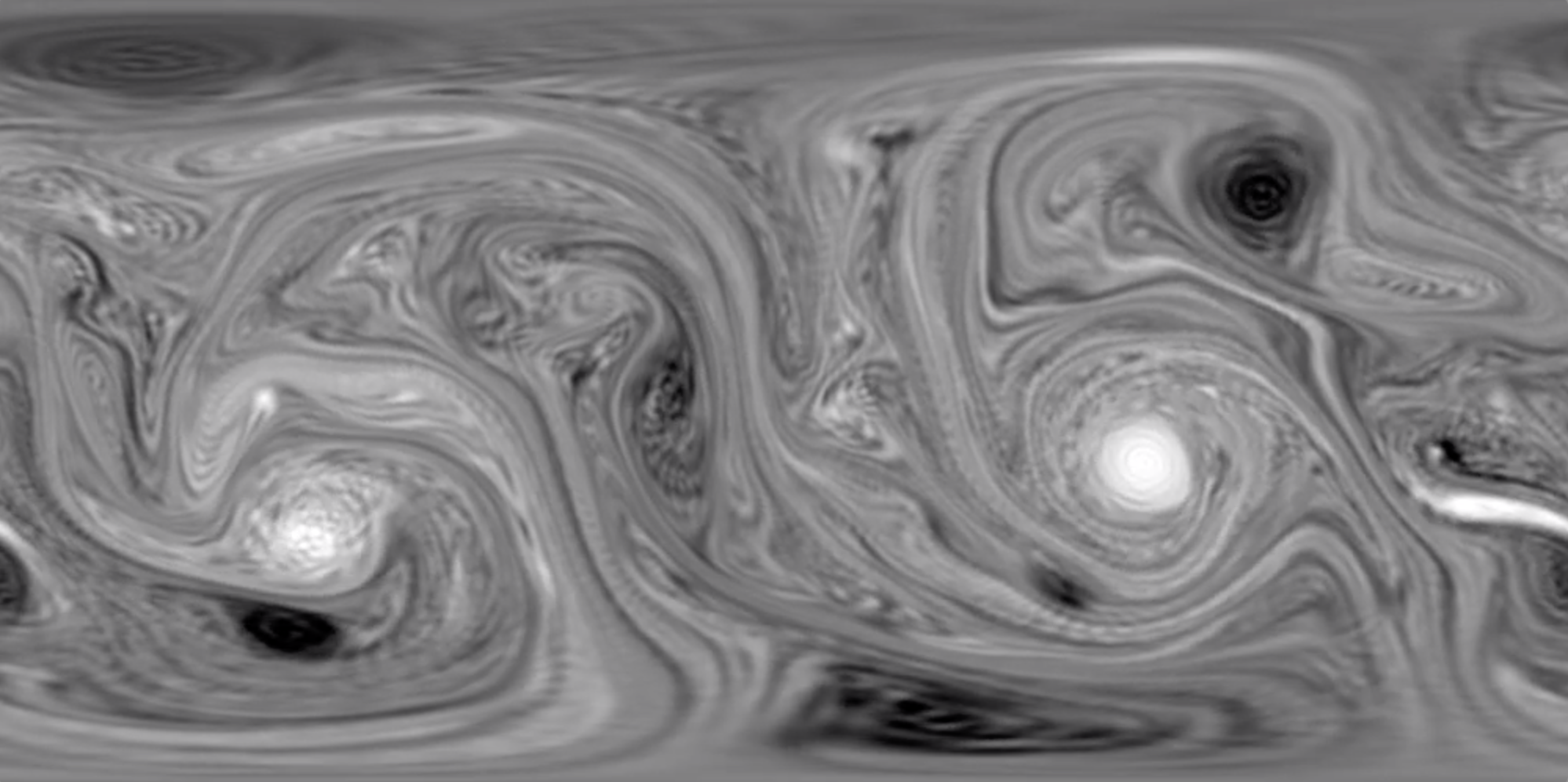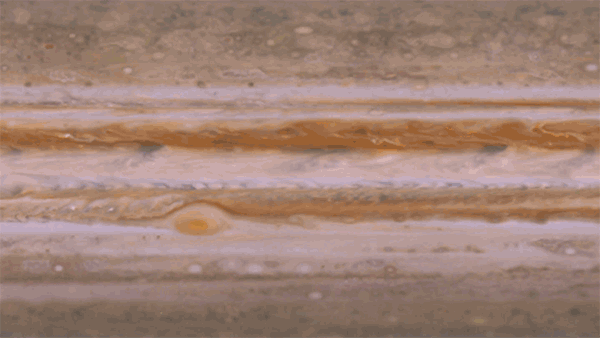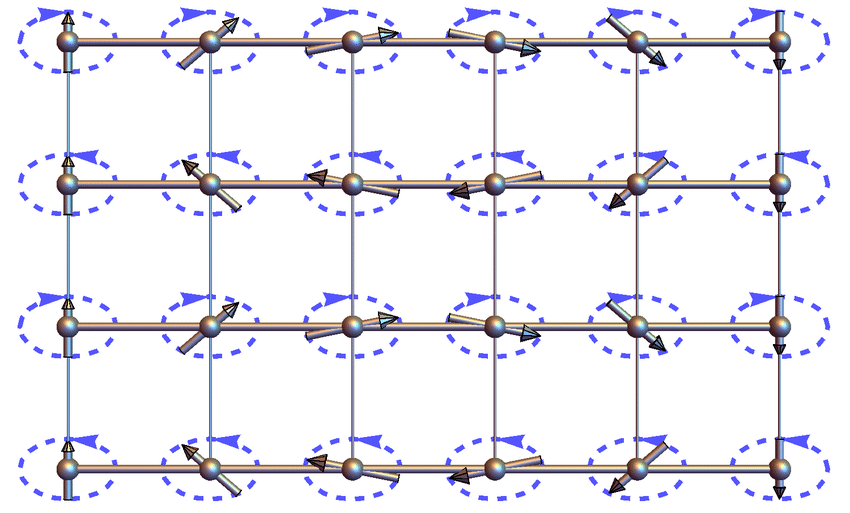Hamiltonian Isospectral Flows and Geophysical Hydrodynamics
Klas Modin


Part of PhD work
Milo Viviani
Chalmers and University of Gothenburg

Motivation
Holy grail of 2D incompressible hydrodynamics:
- Inner workings of the inverse energy cascade
- Long-time behavior of mean-flow condensates

Zonal jet and vortex structures on Jupiter
Copyright: NASA, Cassini Imaging Team
Outline
- Connection between isospectral flows and geophysical hydrodynamics
- New isospectral symplectic methods: Isospectral Symplectic Runge-Kutta (IsoSRK)
- Predictions by statistical mechanics
- Predictions by numerical simulations
Hamiltonian isospectral flows
Let \(B\colon\mathbb{C}^{n\times n}\to\mathbb{C}^{n\times n}\)
isospectral flow
Analytic function \(f\) yields first integral
Casimir function
Hamiltonian case
Hamiltonian function
Note: Non-canonical Poisson structure (Lie-Poisson)
Examples
- Toda lattice (periodic and non-periodic)
Particles interacting pairwise with exponential forces
Connection to numerical linear algebra: flow that diagonalizes matrices, continuous analog of \(QR\)-algorithm
- \(n\)-dimensional free rigid body
- Heisenberg spin chain
Discretization of Landau-Lifschitz equation \[\dot{\mathbf s} = \mathbf s\times \Delta \mathbf s,\quad s:S^1\to \mathbf R^3\qquad\phantom{hej}\] - etc.

Euler equations on \(\mathbb S^2\)
Apply \(\operatorname{curl}\)
geodesic equation on \(\operatorname{SDiff}(\mathbb S^2)\)
vorticity formulation
Note: \(\omega\) transported by \(v\)
Helmholtz decomposition \(\Rightarrow\) \(v = \nabla^\bot \psi\)
Coriolis force
Stream function
Casimirs: for any \(f:\mathbb R\to\mathbb R\)
Note: Casimirs strongly affect long-time behavior
Euler \(\iff\) isospectral
via geometric quantization
\((C_0^\infty(\mathbb S^2),\{\cdot,\cdot\})\) a Poisson algebra
Quantization: projections \(P_N:C^\infty_0(\mathbb S^2) \to \mathfrak g_N\) such that
Lie algebras
Explicit construction by Hoppe*
* [J. Hoppe, PhD thesis, MIT Cambridge 1982]
expressed through spherical harmonics
- Convergence \(\{\cdot,\cdot\} \to [\cdot,\cdot]_N\) established (\(L^\alpha\)-approximations)
- "Magic" formula for discrete Laplacian
\[\Delta_N W =\frac{N^2-1}{2}\left([X^N,[X^N,W]]- \frac{1}{2}[X_+^N,[X_-^N,W]]- \frac{1}{2}[X_-^N,[X_+^N,W]] \right) \]
[Bordemann, Hoppe, Schaller, Schlichenmaier, 1991]
[Hoppe & Yau, 1998]
banded matrices
Spatial discretization obtained!
Note: corresponds to
\(N^2\) spherical harmonics
\(O(N^2)\) operations
\(O(N^3)\) operations
Isospectral flow \(\Rightarrow\) discrete Casimirs
Time discretization
Aims: numerical integrator that is
-
isospectral, \(W_{k}\to W_{k+1}\) an isospectral map
necessary to preserve Casimirs
-
symplectic, \(W_{k}\to W_{k+1}\) a Lie-Poisson map \(\mathfrak{su}(N)^*\to\mathfrak{su}(N)^*\)
necessary to (nearly) preserve energy and phase space structure
What about symplectic Runge-Kutta methods?
- Not Lie-Poisson preserving!
- Not isospectral!
...nevertheless, symplectic Runge-Kutta saves the day...
Isospectral Symplectic
Runge-Kutta methods (IsoSRK)*
*[M. & Viviani, FoCM, 2019]
Given \(s\)-stage Butcher tableau \((a_{ij},b_i)\) for SRK
Theorem: method is isospectral and Lie-Poisson preserving on any reductive Lie algebra
Example: Isospectral midpoint method (IsoMP)
Application to geophysical hydrodynamics
Controversy in 2D turbulence:
Statistical mechanics suggests steady asymptotic minimizing entropy while preserving the Casimirs
High resolution numerical simulations suggest otherwise
[Robert & Sommeria, 1991]
[Dritschel, Qi, Marston, 2015]
Their numerical method use dissipation and does not preserve all Casimirs
\(\Rightarrow\) likely affect asymptotic behavior
Our results (non-rotating)
[M. & Viviani, 2019 (under review)]
Fast-forward
Evolution of vorticity \(\omega\)
Alignment with
point-vortex dynamics
Results (Rossby-Haurwitz wave)
...compare with Jupiter

THANKS!
- Slides at slides.com/kmodin
- Videos at bitbucket.org/kmodin/euler-sphere-quantization